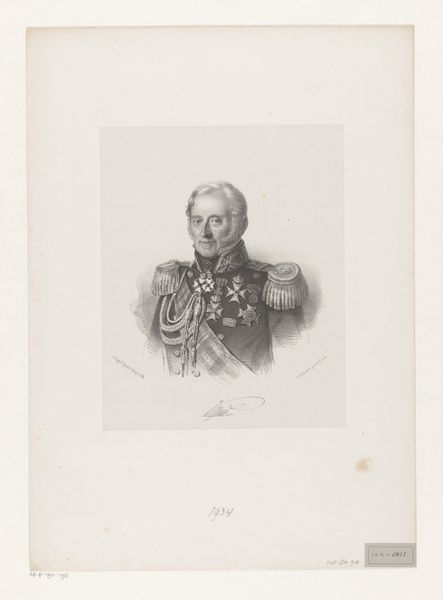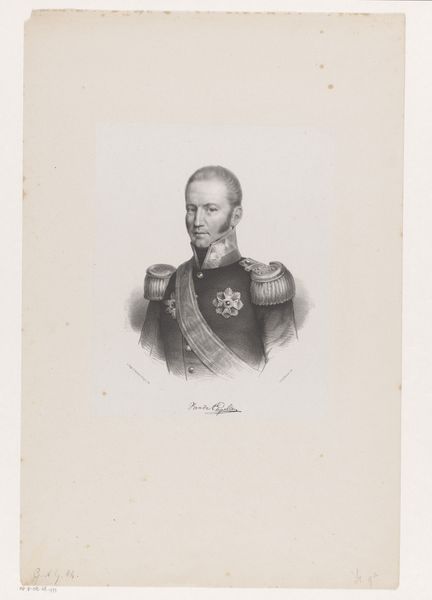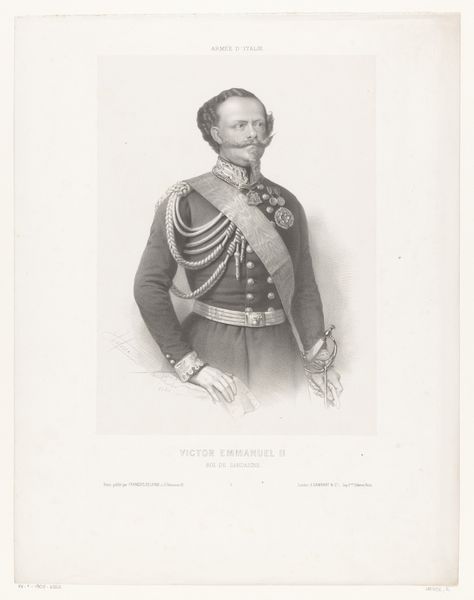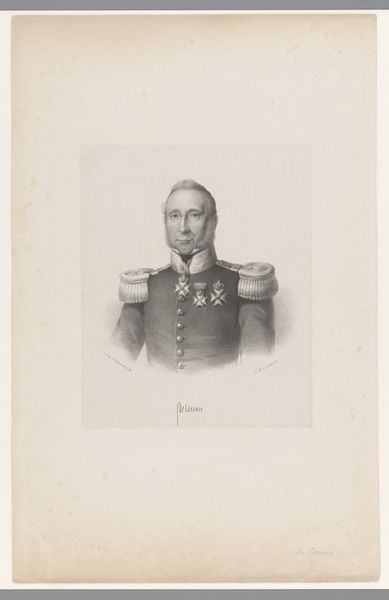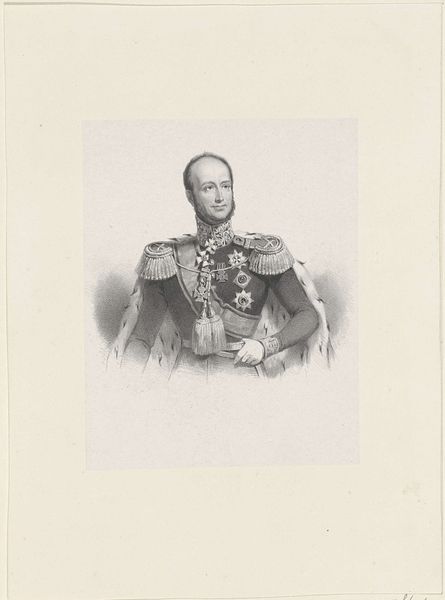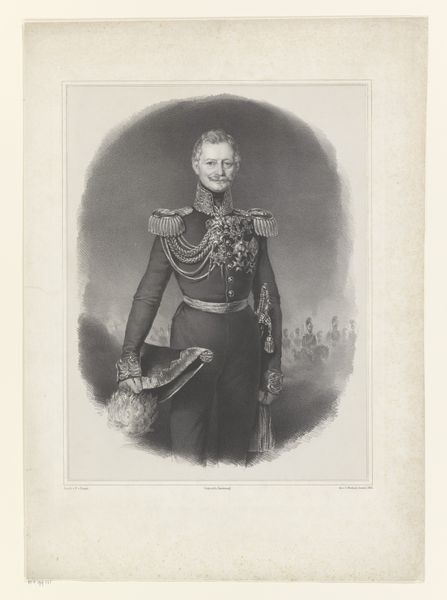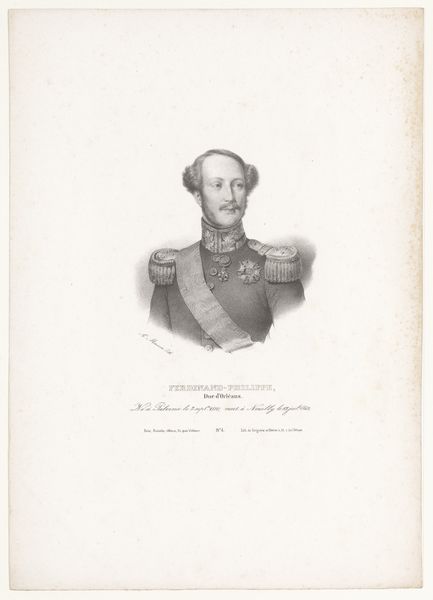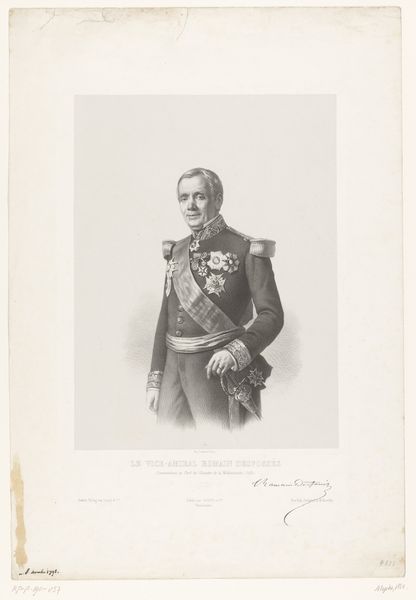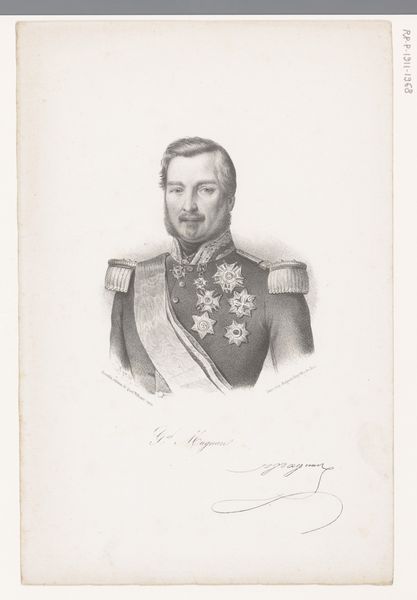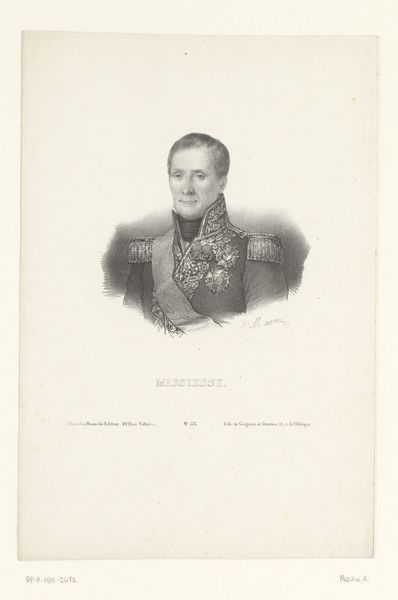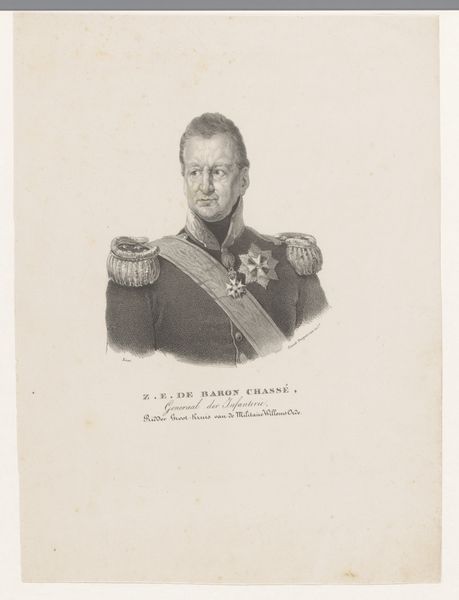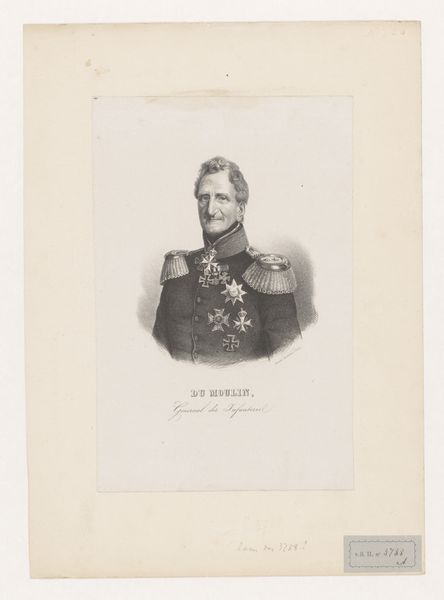
drawing, pencil
#
portrait
#
pencil drawn
#
drawing
#
pencil sketch
#
pencil drawing
#
pencil
#
academic-art
#
realism
Dimensions: height 543 mm, width 360 mm
Copyright: Rijks Museum: Open Domain
Editor: Here we have Johan Hendrik Hoffmeister’s pencil drawing, “Portret van Henri de Perponcher,” created sometime between 1851 and 1883. The detail is striking! All of the medals… it makes me wonder, what symbols stand out to you in this piece? Curator: Beyond the individual, what resonates are the symbols of power so meticulously rendered. Medals, the sash, the severe uniform... these aren’t mere decorations, they are the visual language of authority, specifically coded and understood by his contemporaries. Note how they cluster near the heart—suggesting the very essence of his being is intertwined with duty. Does the precision of the drawing amplify this effect, do you think? Editor: I see what you mean! The heart is where he wears the symbols. And the crisp detail does make them feel important. Does the artist's choice of pencil add anything? Wouldn't oil have seemed more...regal? Curator: Exactly! Oil paint traditionally speaks of permanence, of inherited power, the grand dynastic portrait. The pencil, by contrast, introduces a certain vulnerability. It is a medium more aligned with the sketch, the study, the *process* of representation. Does this hint at a society grappling with the very notion of inherited power in the late 19th century? A slight questioning? Editor: Interesting! So maybe the medium softens the message a little? Almost like it acknowledges a shift in how power was viewed at the time? Curator: Precisely! It’s a fascinating tension: a portrait meticulously rendered with symbols of unwavering authority, yet executed in a medium that whispers of change and impermanence. It reminds us that even the most rigid symbols are interpreted, and re-interpreted, over time. Editor: I’ll definitely look at other portraits from this era with new eyes. Thanks for pointing all that out. Curator: A pleasure. Symbols gain meaning from dialogue, from repeated observation across a culture, or else, what purpose do they serve?
Comments
No comments
Be the first to comment and join the conversation on the ultimate creative platform.
